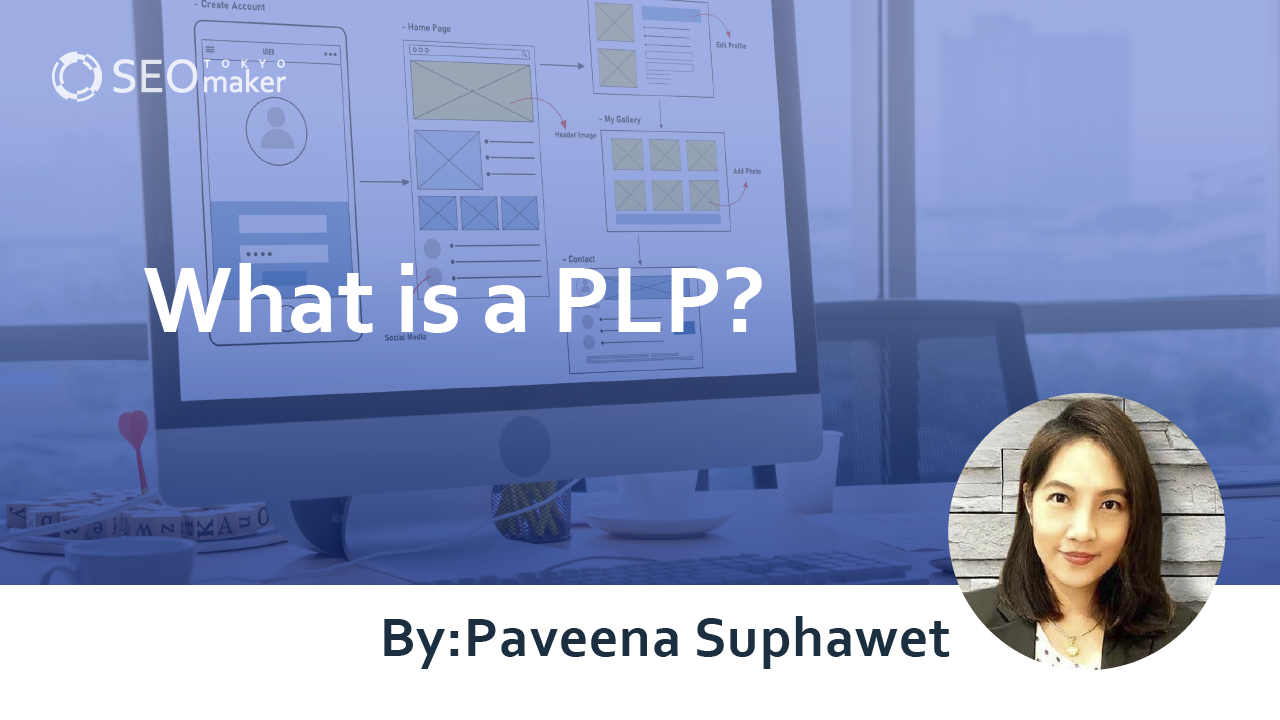What is a PLP? (Preferred Landing Page)? : Explaining How to Improve When the Page Doesn’t Appear
contents

A PLP, or Preferred Landing Page. It’s a common assumption that once a web page is published, it will automatically appear correctly in search results for targeted keywords, but sometimes, the intended web page does not show up.
In such cases, it may be necessary to make adjustments to the web pages you want to prioritize for certain keywords. Knowing how to implement PLP strategies is crucial for addressing these issues.
What is a PLP?
PLP stands for ‘Preferred Landing Page,’ which is the web page you particularly want to show to users who search for specific keywords.
Although website operators would like the intended web pages to appear accurately in search results, there are cases where this does not happen.
For instance, if PLP management is not handled properly, the search results might display the website’s homepage instead of a product page located on a deeper level, or other unrelated web pages that do not match the user’s search intent .
Even if you believe the information placed on a web page is information users are searching for, poor PLP management can misdirect users to unintended pages. Users will leave the displayed page quickly if it does not match their search intent, resulting in lost opportunities for the website operator. Therefore, if there is an issue with the PLP, it needs to be addressed immediately.
Necessity of PLP Management
The need for PLP management stems from preventing lost opportunities. Consider a nationally operating flower shop with a website. Since the shop operates nationwide, there are locations in various regions, and the web pages for specific local keywords need to appear in search results accordingly.
For the search query ‘flower shop Odaiba,’ the web page for the Odaiba location of the chain should appear. However, there might be instances where the search results display the main page of the nationwide chain instead.
If users look for the Odaiba flower shop and see a general homepage that doesn’t provide clear information, they are likely to leave the site quickly. In this way, without proper PLP management, non-optimal web pages may be displayed in search results, missing the opportunity to convert visitors into results.
Disadvantages of Not Managing PLP
There are the following disadvantages of not managing PLP.
- Increase in bounce rate
- Decrease in conversion rate
- Reduction in average time spent on the website
Bounce rate is the percentage of visitors who view only one page and then leave the website. One reason for an increased bounce rate is the mismatch between the user’s needs and the web page content.
If the PLP is not managed, unintended web pages may be displayed, potentially leading to a higher bounce rate.
Conversion rate is the percentage of visitors who achieve a desired outcome. If PLP is not managed, it can result in a situation where the web pages do not meet the users’ needs, leading to lower conversion rates.
Moreover, users often want to find necessary information quickly and efficiently. If the web pages matching their search keywords are not displayed due to poor PLP management, they may leave the website short. Thus, PLP management is crucial for the quality of the website and is also significant for SEO.
Specific Methods for Managing PLP
When there are issues with the PLP, the first steps involve checking the index status and reviewing the content.
-Confirming Index Registration
-Verifying Content Details
-Building Internal Links
Check if Google recognizes the web page and ensure that the content matches search needs.
Checking Index Registration
It’s essential to ensure that the web page you want to display is recognized and indexed by Google; otherwise, it will not appear in search results. To make sure it is indexed, you need to prompt Google’s crawlers to recognize and index the web page.
The methods of confirmation are as follows.
-
-
- Use the “site:” search on Google
- Use Google Search Console
-
By adding ‘site:’ before the URL of the web page you want to check and searching on Google, if it is indexed, it will appear in the search results.
-
-
- You can also use Google Search Console to check for index registration.
- 1.You can also use Google Search Console to check index status by selecting the domain of the web page you want to verify,
- 2.Entering the URL in the search bar at the top of GSC
- 3. Viewing the index registration details.
- 4.If not registered, you can request indexing
- 5.It should appear in search results after a few days
-
Content Revision
If the content is indexed but the PLP is not displaying correctly, it might be that the content does not align with the search intent. In such cases, revising the website content (rewriting) to ensure the PLP displays correctly is necessary.
Here are points to check in rewriting.
-Confirming the Title
-Reevaluating Search Intent
-Incorporating Originality
-Enhancing Expertise
We will explain each point in detail.
Title Verification
To optimize the PLP, you must assign web page titles that align with the needs of the search users. Moreover, when your web page appears in the search results for targeted keywords, it is crucial to have an appealing title that conveys the content to attract users.
Even with the same page content elements, simply changing the title by incorporating keywords can result in higher rankings for targeted search queries. First, try modifying the title as part of your PLP strategy.
Reassessing Search Intent
When creating web content aimed at attracting traffic from search results, it is fundamental to consider the intent behind user searches and to craft web content accordingly. Ensure the content addresses the challenges faced by search users and revisit the structure if it does not.
For instance, consider a web page you want to show up in search results for “cheap florist.” Users may differ in their intent, such as wanting to purchase from a physical store or an online shop. Prioritize search intent and include content that caters to both needs, creating a web page that meets the expectations of search users.
If unsure about the search intent, consider analyzing the top three sites in the search results (SERPs). Investigate the search queries and intent based on the elements of these top-ranking sites.
Incorporating Original Elements
Check if your web page contains original content that is not found on competitor’s websites. By incorporating unique research findings or new information, you can create a web page with originality.
Google’s algorithm values uniqueness, which can lead to higher rankings in search results. Including content that deviates significantly from the search intent may prevent the PLP from displaying correctly, so it is essential to incorporate original elements that consider the search intent.
Enhancing Expertise
Enhancing expertise is a key factor in differentiating your website from competitors and gaining an advantage. Articles with high expertise receive favorable evaluations from Google, leading to higher positions in search results.
For corporate or specialized sites want to promote their business, products, or services, it is crucial to present specialized information about those topics. For specialized sites, it is important to enhance expertise across the entire website, while for general sites, increasing expertise in specific categories is vital.
Building Internal Links
If there are issues with the PLP, build internal links within the site using anchor texts that include the desired keywords for the pages you want to display.
For example, for a page that you want to appear for the keyword ‘affordable flower shop’, gather links from other pages using anchor texts like ‘click here for affordable flowers’. This makes it more likely that the page will be recognized by Google for the inserted search query and appear in search results. Internal linking allows for PLP optimization for each page, and acquiring external links can also be very effective.
Summary
If PLP management is conducted properly, and pages correctly match the search queries, it can lead to lower bounce rates and easier conversions. If there are issues with the PLP, analyze the web pages that have already been published, and make adjustments by rewriting, modifying titles, or building internal links. If the top domain shows up for a search query, it might be worth scrutinizing the PLP. If there’s room for PLP improvement, continue to create and optimize new page content as part of ongoing site enhancement.










![What is a Description? Explaining the Meaning, Writing Style, and Changing Word Count – [2023 Edition]](https://www.switchitmaker2.com/en/wp-content/uploads/2024/09/what-is-description.webp)










